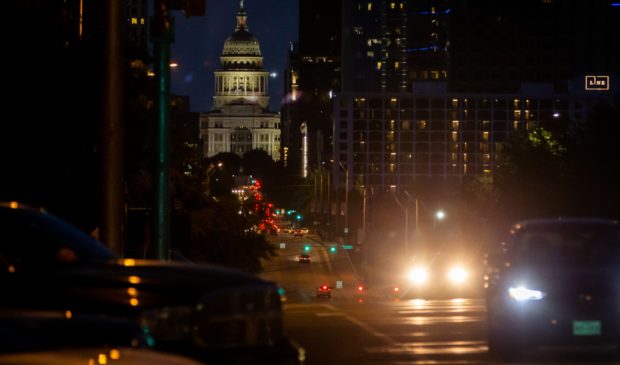Underground light-rail tunnel could be more than a mile longer than expected
Friday, July 23, 2021 by
Nathan Bernier, KUT Austin’s multibillion-dollar transit expansion will require extending an underground light-rail tunnel from Auditorium Shores to as far south as Lively Middle School on South Congress Avenue.
The change could cost hundreds of millions of dollars, but transit planners vow to work it into the budget Austin voters authorized in November when they agreed to a tax increase of 8.75 cents per $100 of property value.
“Construction certainly will be more expensive to do that,” Capital Metro CEO Randy Clarke said of the extended tunnel plans during a board meeting of the Austin Transit Partnership. The independent local government corporation was created to implement the transit buildout dubbed Project Connect.
Technical challenges posed by underground utilities, floodplains and traffic are forcing the adjustment, according to ATP officials.
One of two light-rail lines included in Project Connect would whisk passengers from an underground station downtown near Republic Square Park through a tunnel beneath Lady Bird Lake to a subsurface station at Auditorium Shores.
From there, it gets complicated.
The tunnel under Lady Bird Lake must be deep enough to be in bedrock. At that depth, coming above ground just south of the lake is “infeasible,” according to a presentation to the ATP board.
The next point where the tunnel could emerge is not possible, planners say, due to several major intersections and the 100-year floodplain at Riverside Drive. South of there, the Bouldin Creek floodplain interferes with a possible “tunnel portal” where the Orange Line could emerge.

A slide from a presentation to the Austin Transit Partnership board explains engineering challenges with having an underground tunnel emerge closer to Lady Bird Lake.
As the tunnel continues south, South Congress Avenue begins to slope up, creating a new technical challenge of “chasing grade.” So the first opportunity for the Orange Line to arrive at surface level would be on South Congress Avenue near Academy Drive, officials said.
An alternative plan would see the light-rail tunnel continue underground more than half a mile farther down South Congress Avenue and “daylight” – in transit parlance – near Lively Middle School at Leland Street.
The longer tunnel would offer more flexibility in how roads and sidewalks would have to be reconfigured to accommodate the light-rail infrastructure, ATP’s chief of architecture and urban design, Peter Mullan, said. The shorter tunnel would cost less, but would create additional engineering constraints. The longer tunnel would mean the SoCo Station would be underground instead of at surface level.

A slide shows two options for where the Orange Line could emerge from underground on South Congress Avenue.
Some board members warned transit planners not to make too many changes to Project Connect without thinking first about how to pay for them.
“Anytime we go underground, I know you all know it, costs go up exponentially,” said ATP Board Member Tony Elkins, a transportation finance professional with the investment company BBGI Global Infrastructure.
“Tunnels are potentially $700 million to $1 billion a mile,” Elkins said. “There’s higher operations and maintenance costs on tunnels.”
It’s too early in the planning process for a price tag on the two extended tunnel options, but cost estimates should become clearer by September, Clarke said. He added that an extended tunnel may offer benefits such as reduced trip times and improved safety by getting light rail off the street and out of the way of pedestrians and vehicles in what is already a bustling retail district.
ATP officials said they would work within the budget approved by voters and seek additional funding through federal grants or other sources, “not from local taxpayers, just to be clear,” Mullan said.
The public will have a chance to weigh in on both light-rail lines starting next week with a flurry of community meetings. The lone in-person open house, planned for July 31 at the Austin Central Library, was canceled amid concerns about rising Covid-19 cases.
This story was produced as part of the Austin Monitor’s reporting partnership with KUT.
The Austin Monitor’s work is made possible by donations from the community. Though our reporting covers donors from time to time, we are careful to keep business and editorial efforts separate while maintaining transparency. A complete list of donors is available here, and our code of ethics is explained here.
You're a community leader
And we’re honored you look to us for serious, in-depth news. You know a strong community needs local and dedicated watchdog reporting. We’re here for you and that won’t change. Now will you take the powerful next step and support our nonprofit news organization?









